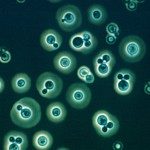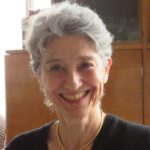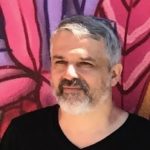Link to Pubmed [PMID] – 12704160
Infect. Immun. 2003 May;71(5):2868-75
Cryptococcus neoformans is surrounded by an antiphagocytic polysaccharide capsule whose primary constituent is glucuronoxylomannan (GXM). Three prominent structural features of GXM are single xylosyl and glucuronosyl side chains and O acetylation of the mannose backbone. Isogenic pairs of O-acetyl-positive and O-acetyl-negative strains (cas1 Delta) as well as xylose-positive and xylose-negative strains (uxs1 Delta) of serotype D have been reported. The cas1 Delta strains were hypervirulent, and the uxs1 Delta strains were avirulent. The goal of this study was to examine the effects of the cas1 Delta and uxs1 Delta mutations on the following: (i) binding of anti-GXM monoclonal antibodies (MAbs) in capsular quellung reactions, (ii) activation of the complement system and binding of C3, (iii) phagocytosis by neutrophils, and (iv) clearance of GXM in vivo. The results showed that loss of O acetylation produced dramatic changes in the reactivities of five of seven anti-GXM MAbs. In contrast, loss of xylosylation produced a substantive alteration in the binding behavior of only one MAb. O-acetyl-negative strains showed no alteration in activation and binding of C3 from normal serum. Xylose-negative strains exhibited accelerated kinetics for C3 deposition. Loss of O acetylation or xylosylation had no effect on phagocytosis of serum-opsonized yeast cells by human neutrophils. Finally, loss of O acetylation or xylosylation altered the kinetics for clearance of GXM from serum and accumulation of GXM in the liver and spleen. These results show that O acetylation and/or xylosylation are important for binding of anti-GXM MAbs, for complement activation, and for tissue accumulation of GXM but do not impact phagocytosis by neutrophils.



